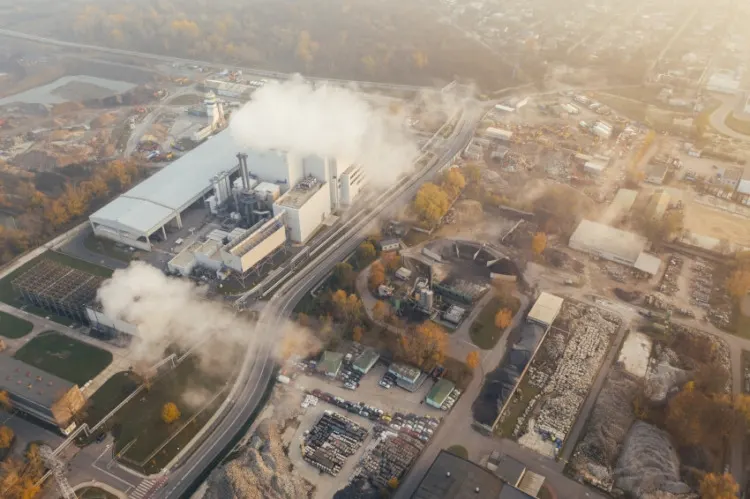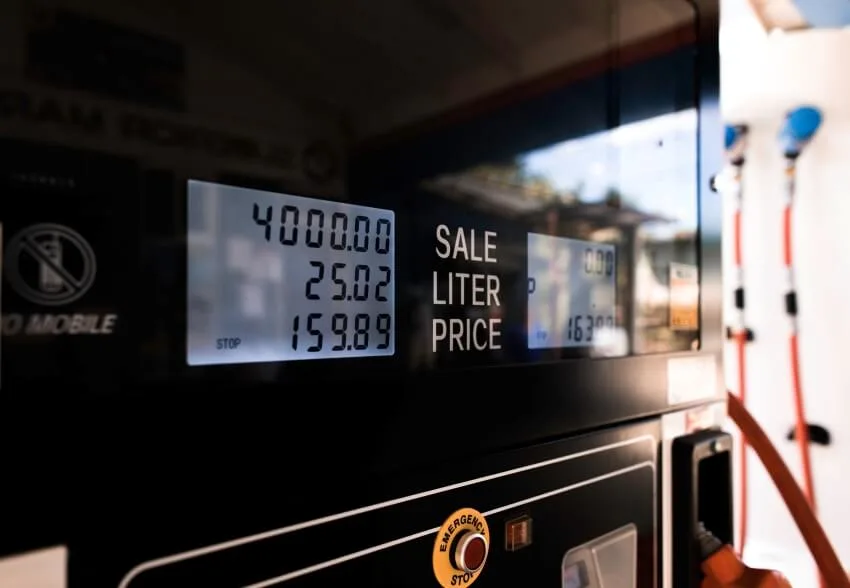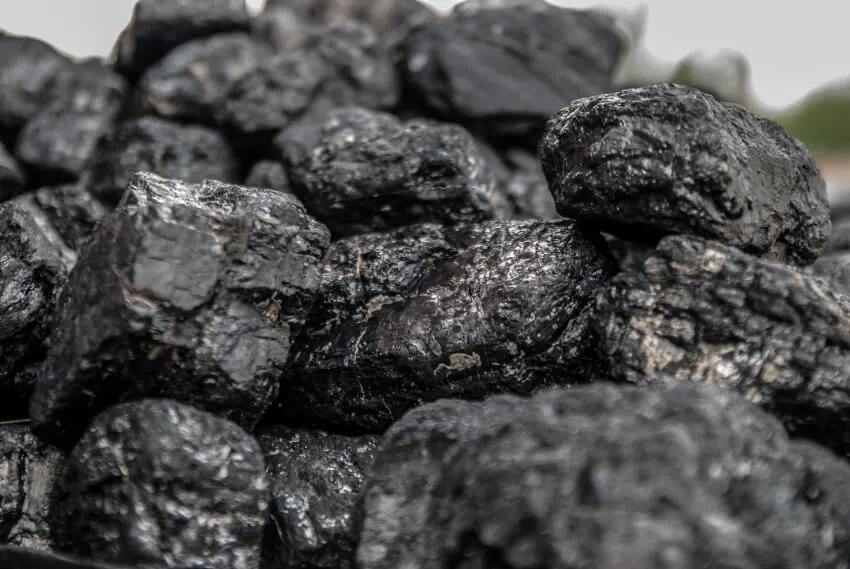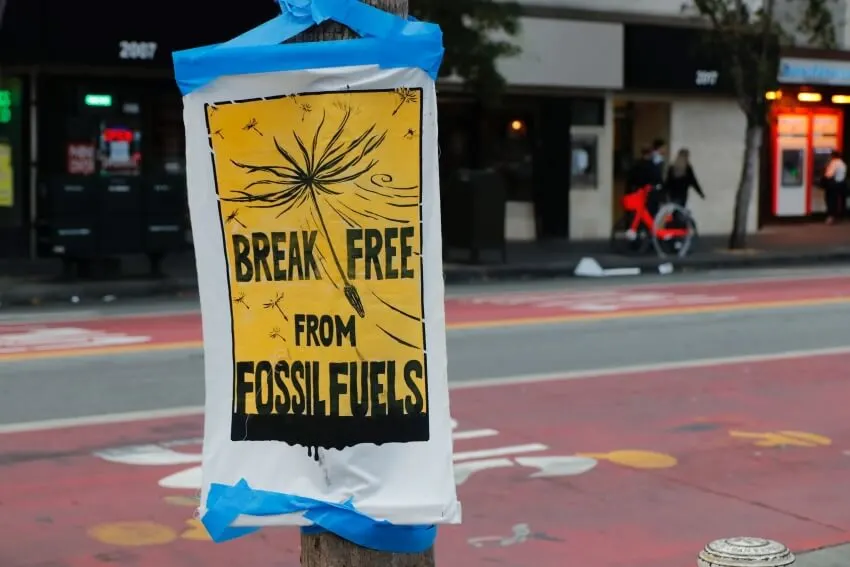Is natural gas a fossil fuel? The answer to this question is a bit complicated. Natural gas is, in fact, a fossil fuel, but it is not the same type of fossil fuel as coal or oil. In simple terms, natural gas forms when organic matter decays over a long period. This happens under intense pressure and heat.
This makes it different from other fossil fuels, which come from the remains of prehistoric creatures that died long ago. While natural gas may not be as harmful to the environment as other fossil fuels, it still poses some risks.
So, is natural gas a fossil fuel? What does fossil fuel mean? And is gas a fossil fuel? In this blog post, we’ll look at natural gas and explore the different aspects of fossil fuels.
What Are Fossil Fuels?

Fossil fuels are organic, carbon-based substances found in the Earth’s crust. They form from the remains of prehistoric plants and animals that died years ago, approximately a million years ago.
There are three main types of fossil fuels: coal, oil, and natural gas. Each one has a different chemical makeup and provides different benefits. Environmental factors such as temperature changes affect the speed at which organic material breaks down.
For example, when it is colder outside, the speed at which things decompose will usually be slower than when it is warmer. Additionally, fossil fuels decompose into CO2.
Nowadays, many people rely on these substances because they are more available than other alternatives. Solar power, wind turbines, and hydroelectricity plants all exist but have not yet reached their full potential.
Fossil fuels are called fossil fuels because they were once living plants or animals. But now they are dead and buried. Extracting these resources involves drilling deep into layers of sedimentary rock.
This can be a very slow process since there is only a small amount of petroleum in each location. Fossil fuels are not renewable resources. Renewable resources, such as solar and wind energy, can be replenished in a human lifetime.
Fossil fuels take a long time to form, and we can’t replace them fast enough to meet the world’s growing energy needs. That’s why we must rely more on renewable sources of energy.
Burning fossil fuels releases harmful gases like carbon dioxide and sulfur into the air. These gasses can cause serious environmental damage.
Although it is cheap to extract and use now, it will eventually run out. We will then need to find new and renewable sources of energy like solar power or wind energy.
Examples Of A Fossil Fuel
Some examples of fossil fuels are crude oil, natural gas, coal, coal products, petroleum products, derived gas, and non-renewable wastes. Oil, natural gas, and coal are the most used fossil fuels today.
Fossil fuel usage contributes to air pollution, global warming, and other environmental problems because of its high carbon content. Releasing greenhouse gasses when burned, as well as depleting valuable resources such as water.
How Are Fossil Fuels Different?
Fossil fuels are always being formed, but millions of years must pass for that to be true. This means we will run out if nothing changes in the consumption rate!
Oil

- Black gold color
- Nonrenewable
- Found in liquid form underground
- Used as a transportation fuel, lubricant, and petrochemical feedstock
See Related: How Are Fossil Fuels Taken from the Earth?
Coal

- Solid fossil fuel
- Takes millions of years to form
- Used as a source of heat for factories and homes
- It can also be turned into liquid coal, which can be burned in power plants to create electricity.
Natural Gas

- Methane and ethane
- Nonrenewable
- Found in gas from underground
- Used as a source of energy, heating, cooking, transportation fuel, petrochemical feedstock
What Are Fossil Fuels Used For?
Fossil fuels are a source of energy. They can be burnt to release heat and produce electricity. They may also be converted into liquid fuels such as petrol, diesel, kerosene, etc.
Natural gas is a valuable resource to generate over 25% of our energy. About half of the homes in the United States use natural gas to heat their homes.
It is also used to make a variety of common products, such as paints, fertilizers, plastics, clothes, medicines, and antifreeze. 33% of our electricity is produced using natural gas.
Many homes use methane derived from natural gas to heat water and cook food. Natural gas is also made into fertilizer, which helps plants grow better crops faster than without.
Fossil fuels are also used for transportation. Petroleum products like gasoline or heating oil are used in cars, trucks, buses, trains, ships, and planes.
Coal is burnt to create heat for factories and homes. It can also be turned into liquid coal, which can be burned in power plants to create electricity. People have been using fossil fuels for a long time. In recent years, people have been using fewer sources that release carbon dioxide.
See Related: Important Pros and Cons of Offshore Drilling
History of Natural Gas
Natural gas has been utilized as an energy source for nearly two centuries in the United States. But its history goes back over six thousand years to its original discovery in Iran.
China discovered its sources of natural gas around 900 BCE. The Chinese drilled for natural gas with a pipeline made of bamboo around 211 BCE.
The first use of natural gas as an energy source was in 1821, when it was used to light a small town in Fredonia, New York. Some people were believed to be using natural gas for heating and cooking around this time.
Natural gas began to be produced on a larger scale during World War II, but it wasn’t until after the war that it was used as a commercial fuel. Pipelines were built to move natural gas from the producing states to the consuming states. Technology for pipelines has also improved during this time.
The use of natural gas increased rapidly during the 1960s and 1970s because it was considered a clean-burning fuel. It emitted less pollution than other fuels such as coal and oil. It also helped deal with the oil crisis in the 1970s when there was a short supply of crude oil.
See Related: Important Pros and Cons of Fossil Fuels
What Is Natural Gas?
Natural gas is the cleanest-burning hydrocarbon on the planet. It does not emit ash residues, sulfur oxides, and only minor amounts of nitrogen. This distinguishes it from all other fossil fuels. Natural gas is extracted from the earth’s crust by heating it to a high temperature and then compressing it.
It results from decomposing plant and animal matter entombed in sedimentary rock layers for millions of years.
After being formed, the gas tends to flow through pore spaces, fractures, and fissures in the surrounding rock to the surface. Some gas reaches the surface naturally. It comes out from seeps. Other gas molecules move until trapped in rock, shale, salt, or clay layers.
Natural gas fossil fuel is found worldwide, either by itself or with crude oil. It can be found under dry land and beneath the ocean floor. The reservoirs holding trapped deposits are usually 1 to 7.5 kilometers deep and are utilized to recover natural gas.
Methane is the main component of natural gas. Raw natural gas may also contain some mixture of butane, propane, and pentane gasses.
It might also have some nitrogen, carbon dioxide, and water vapor. Before the natural gas is sold, it goes through a process that purifies it into methane and ethane.
How Is Natural Gas Extracted?
Natural gas is extracted by drilling wells into underground deposits known as shale formations. The gas is extracted by fracking. This process uses high-pressure water to fracture the shale and release the gas.
Because it is a cleaner-burning fuel than other fossil fuels and is plentiful, natural gas is gaining favor as an energy source worldwide.
There are some concerns about the extraction of natural gas from shale formations. Drilling for oil and gas can produce a lot of water contaminated with chemicals. If the drilling isn’t managed, groundwater supplies near the wells can be contaminated.
What Are The Benefits Of Using Natural Gas?
- Cleaner: Natural gas is cleaner than other fossil fuels.
- Less Negative Effects: Natural gas has fewer negative effects on human health and the environment. Especially when burned for energy production, transportation, or steel manufacturing.
- Efficient Drilling Methods: The natural gas industry has new technologies for drilling and extracting gas. This makes the process more efficient.
- Easily Accessible: Natural gas is widely available in many parts of the world. This makes it easy for people to access it.
- Stabilizes Economies: Most countries rely on natural gas as a domestic fuel source. This helps reduce our reliance on imported fuels like oil or coal from other countries. If we rely on these foreign fuels, political instability or war in those countries could disrupt our supply. Using natural gas instead can help stabilize our economy.
- Job Creation: The natural gas industry creates jobs for people who work on pipelines and other infrastructure projects. These jobs can be in the construction, engineering, and environmental industries.
See Related: Best Off-Grid Heating Systems
What Are The Drawbacks Of Using Natural Gas?

- Natural Gas Is a Nonrenewable Energy Source: Natural gas is energy from the underground. This type of energy is nonrenewable because it cannot be replaced easily. This means it cannot be replaced as quickly as renewable resources like solar and wind power.
- Natural Gas Is a Fossil Fuel: Like other fossil fuels, natural gas releases carbon dioxide when burned. This contributes to climate change and global warming.
- Pipelines Can Leak: Pipelines are not always perfect and can leak. It can contaminate soil and water supplies with harmful chemicals like methane and benzene.
- Drilling Can Cause Environmental Damage: Drilling for natural gas can cause environmental damage, such as destroying forests and other habitats. It can also contaminate water supplies with chemicals from the drilling process.
- The Process of Fracking Is Harmful: The process of fracking, or hydraulic fracturing, is controversial because it has been linked to water contamination and the release of greenhouse gases into the atmosphere. Some people also argue that it causes small earthquakes.
See Related: Do Teslas Use Gas? Here’s What to Know
Which Fossil Fuel Is Better For The Environment?
No clear answer exists regarding which fossil fuel is better for the environment. Coal has been linked to many health and environmental problems. At the same time, natural gas produces less carbon dioxide than other fossil fuel emissions.
It depends on the individual case and how the fuel is used. For example, using coal in a power plant may negatively affect human health more than using natural gas in your home.
But if you are looking at the global picture, it is important to consider how much carbon dioxide each fuel releases into the air when burned.
In this case, natural gas is the better choice because it releases less carbon dioxide than other fossil fuels. However, the methane released can be worse than the carbon dioxide, so whether the overall benefit is greater than the others is debatable.
Natural gas is an important energy source that can be used in many ways. It is a clean-burning fuel with lower greenhouse gas emissions than coal or oil.
Natural gas is taken from underground through drilling wells. Pipelines are used to transport natural gas to end users. Natural gas is used for different purposes like powering factories, heating homes, and cooking food. Many people think we should stop using fossil fuels because they cause climate change and global warming.
See Related: Best States for Sustainable Living
What Are Some Environmental Problems Caused By The Use Of Fossil Fuels?

Burning fossil fuels such as natural gas, oil, and coal releases greenhouse gasses into the atmosphere. These gasses contribute to global warming and climate change. They also cause air pollution and acid rain.
Mining and drilling operations can cause soil erosion, water pollution, and air pollution. Soil erosion can occur when the land is disturbed by mining or drilling operations.
Water pollution can be caused by releasing pollutants into water bodies such as rivers and lakes. Air pollution can be caused by releasing atmospheric pollutants, such as carbon monoxide and sulfur dioxide.
Spills at sea or on land due to transport accidents can also create environmental problems. It contaminates drinking water supplies, destroys marine life, kills plants that grow along rivers or coastlines, and so on.
Using fossil fuels, such as natural gas, also contributes to the problem of energy insecurity. Our reliance on a limited number of sources for our energy needs makes us vulnerable to disruptions in supply. Or price increases that could cause shortages and higher prices.
This has happened in the past with oil embargoes and gas price spikes.
How Can We Reduce Our Reliance On Natural Gas?
We can reduce our reliance on natural gas in a few ways.
- We can use less energy by being more efficient in using electricity and other forms of power.
- You can reduce your personal use of fossil fuels by using more energy-efficient appliances. Also, by making sure they are maintained.
- You can also conserve energy at home by turning off lights when you leave a room or lowering the heat in the winter.
- We can also switch to renewable sources of energy like solar and wind power.
- We can use technologies to help us use fossil fuels more efficiently so that we don’t release as much carbon dioxide into the air.
See Related: Best Home Energy Saving Products to Buy Today
What Should We Do?
Today, natural gas is largely the result of ancient plants and animals living in shallow seas. Millions of years ago, when these animals died, their bodies were covered by sediment. This later turned into rock, with organic feedstock embedded in it. The heat from compression converted some of the biomaterials into energy we can use today!
Fossil fuels are nonrenewable resources because they cannot be replaced within a human lifetime. Fossil fuels take millions of years to form. So, we must rely more on renewable sources like solar and wind energy to reduce the amount of carbon dioxide emitted into the atmosphere.
Related Resources
